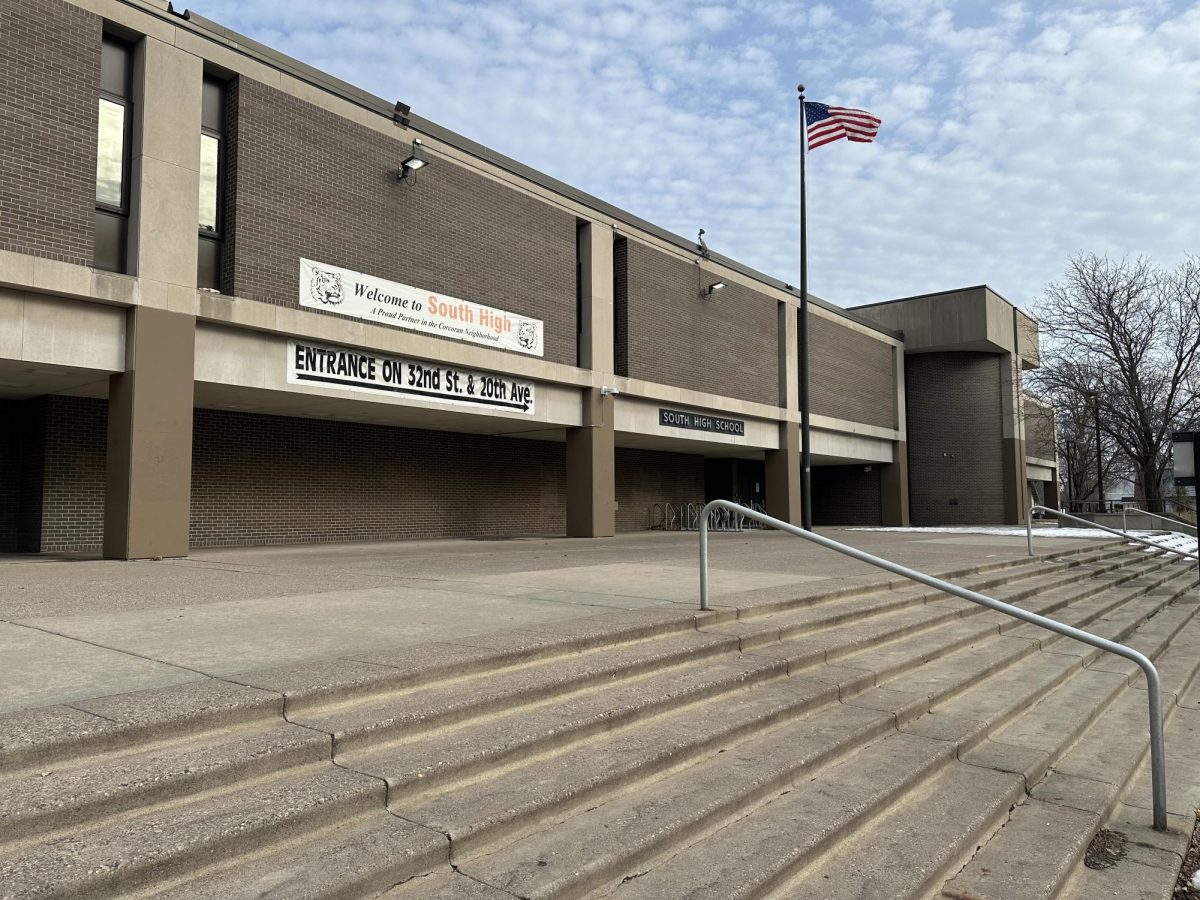Note: This article is a part of the Southerner’s special edition coverage of South’s 2024 budget cuts.
With so much money lost due to budget cuts, it can be hard to figure out what’s causing them or who’s to blame. Many staff and students have focused their frustration towards Principal Runsewe, but to an extent his hands are tied. While the Minneapolis School Board and Superintendent have more power, they’re also only working with the money they are allotted. These leaders do have the power to choose how money is divvied up throughout the schools in the district—and that power does have a significant impact on South High School’s budget—but there will always be disagreements on how Minneapolis Public Schools is spending its money and it is impossible to devise a “perfect” budget, especially in the district’s current situation. What many people neglect to talk about, however, is how MPS can benefit from changing state-level policies that are impacting the district negatively.
State Representative Samantha Sencer-Mura (DFL-Minneapolis), who is also a South High graduate, is a member of the House Education Finance Committee and is leading the way in policy changes that support MPS.
MPS has seen a steady decline in enrollment in recent decades. At its peak, the district had around 50,000 students attending. Ten years ago, that number was 38,000. Now, it’s 29,000. Enrollment is so important to budgeting because a large portion of each school district’s spending money is allotted on a per-student basis, meaning that less students equals less money. “We have very lenient open enrollment policies,” said Sencer-Mura. “In Minnesota, if a district has a spot for you and you can provide your own transportation, you can go to another district.” This makes it easy for students to leave MPS, even if they live within Minneapolis. Additionally, about 5,000 students attend charter schools in Minneapolis and the city’s youth population in general is dropping due to a variety of reasons, such as families leaving for the suburbs. Almost half of Minneapolis students attend a school district other than MPS. “The declining population of students in Minneapolis schools and the fact that a lot of our funding is tied to ‘per-pupil’ is one of the things that really hurts Minneapolis,” commented Sencer-Mura. “And we’ve seen more population decline than most other districts.”
Another funding factor that affects MPS more than some districts is the special education and English Language Learner (ELL) cross-subsidy. Schools are federally mandated to spend a certain amount of money for each special education and ELL student to provide them additional resources. However, the amount of money that school districts receive from the state and federal government isn’t enough to cover the entire amount. “Districts that have high populations of those students end up spending some of their general fund money on ensuring that those students have the supports that they need,” detailed Sencer-Mura. This disproportionately affects public schools that aren’t able to turn students away like how charter schools can.
“It’s a tricky thing to talk about because what I would never want to say and what I want to make really clear is that you never want to vilify the special education students,” added Sencer-Mura. “We’re not saying that we shouldn’t have to pay for those services for them or that those services are not necessary… But the reality is that if the district is having to pick up all of those costs, they just have less money for other things.”
In addition to the cross-subsidy, MPS has to pay for special-education and ELL services if a student goes to another district or a charter school through a process called billbacks. “This is to ensure that districts don’t just push out special education students,” described Sencer-Mura. This costs MPS around $30 million annually. “When you look at that, I think it’s worth saying, ‘Why is that?’ What does that say about the special education services that we have here in Minneapolis that students are leaving?”
In the Minnesota State Legislature, Sencer-Mura has goals for how to improve education funding in the long-term. One way to provide more funding for MPS is to allocate more money from the state’s budget into education, however this can be tricky because it involves either taking money away from other sectors or raising taxes statewide. Another route is to modify the current funding formula, such as reducing special education billbacks from 80% to 50%, which Sencer-Mura recently proposed in a bill to the House’s Special Education Committee. This would relieve some of these costs from MPS and other school districts that suffer from open enrollment and instead put more weight on the state-level funding. In future sessions of the House, Sencer-Mura also hopes to challenge current open enrollment policies, which are widely unique to Minnesota.
“I think we should be putting pressure on every level of government. To me, the bedrock of a strong society is good schools and good public schools that can take every student,” said Sencer-Mura. “I think every elected official, every leader in Minneapolis should be deeply concerned about what’s happening in Minneapolis Public Schools because we know that if students don’t have good education, safe schools, buildings with people that they can trust, then that has a public safety implication.”
“One thing that I have really come to think about from being an elected official is that you pay for things,” added Sencer-Mura. “If you don’t pay for something now, you’ll pay for it later in a different way. So if you don’t pay for good education for young people now, you’ll pay with more public safety needs in the future… you’ll have more people who might be unemployed in the future, and then you’re having to pay welfare for them… more people might be homeless in the future, and then you’re having to invest in housing. We pay for things whether we like it or not.”


